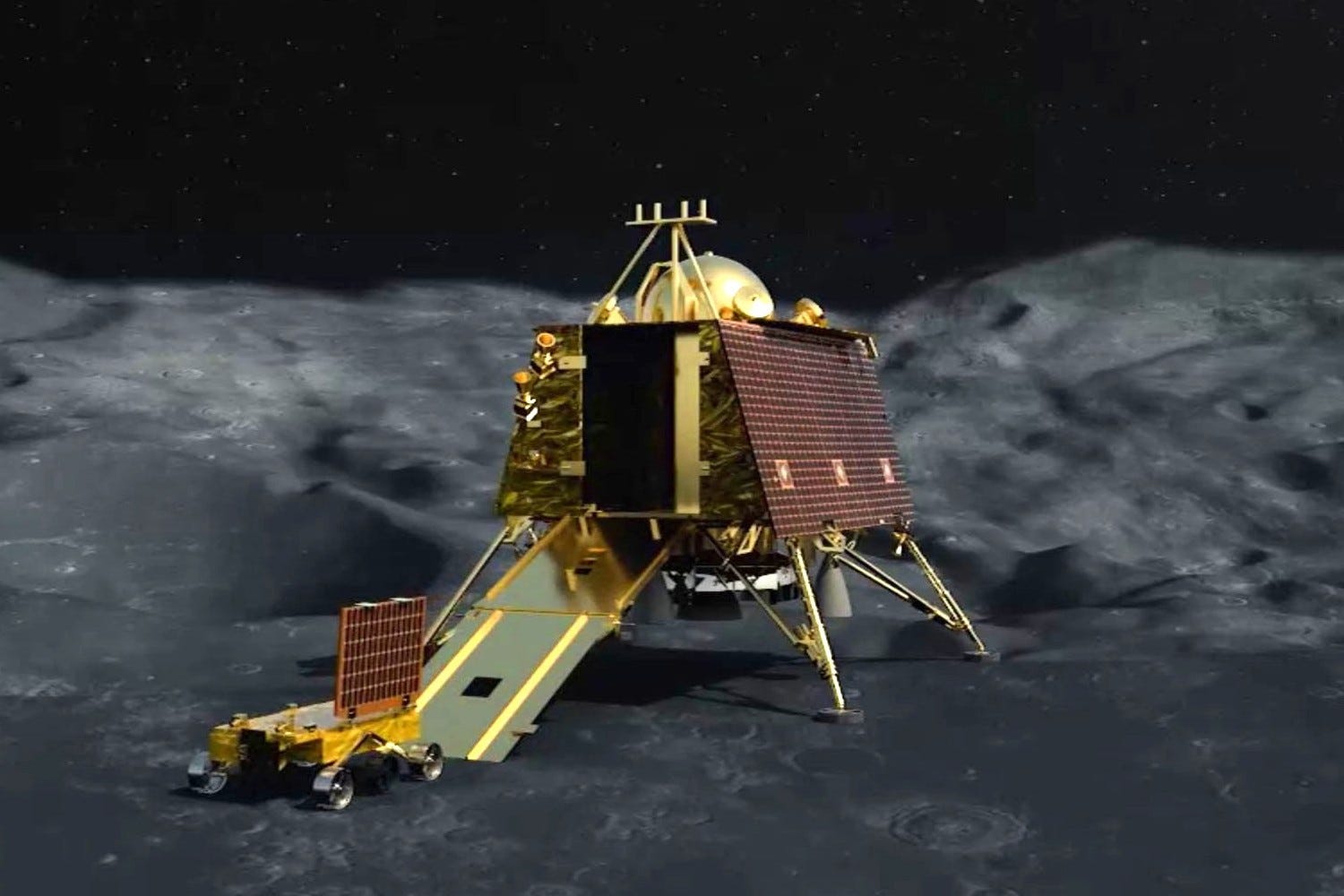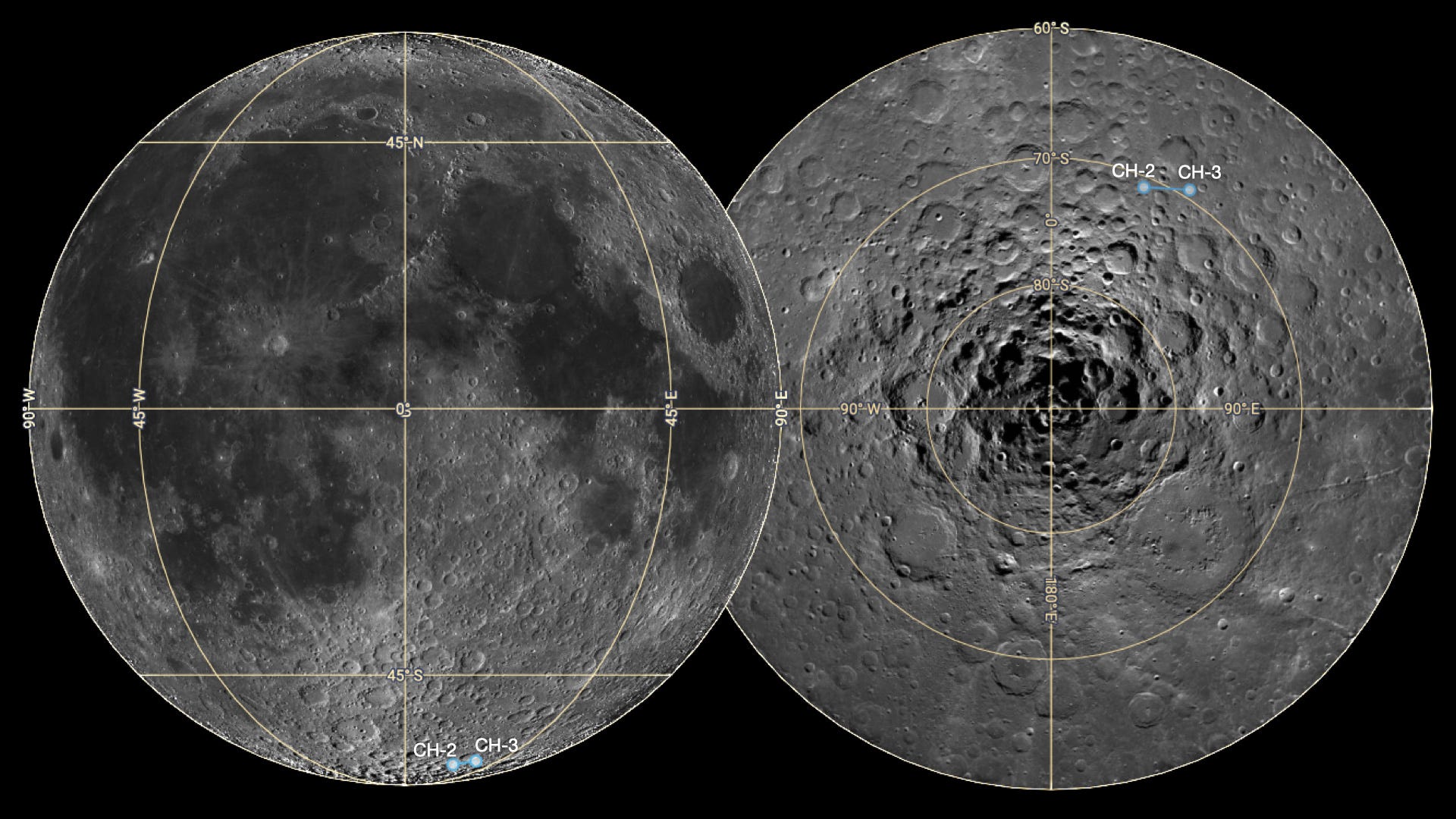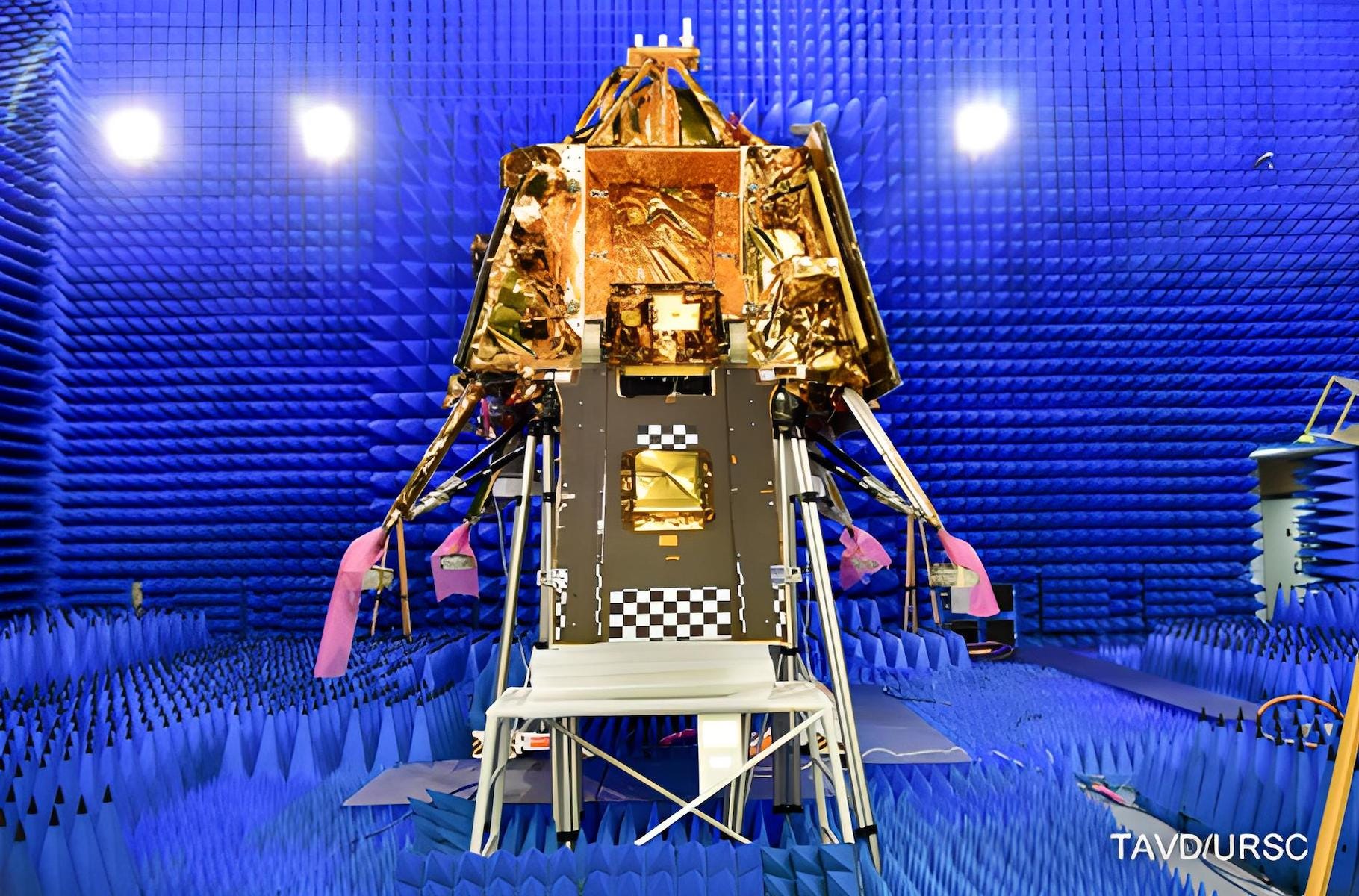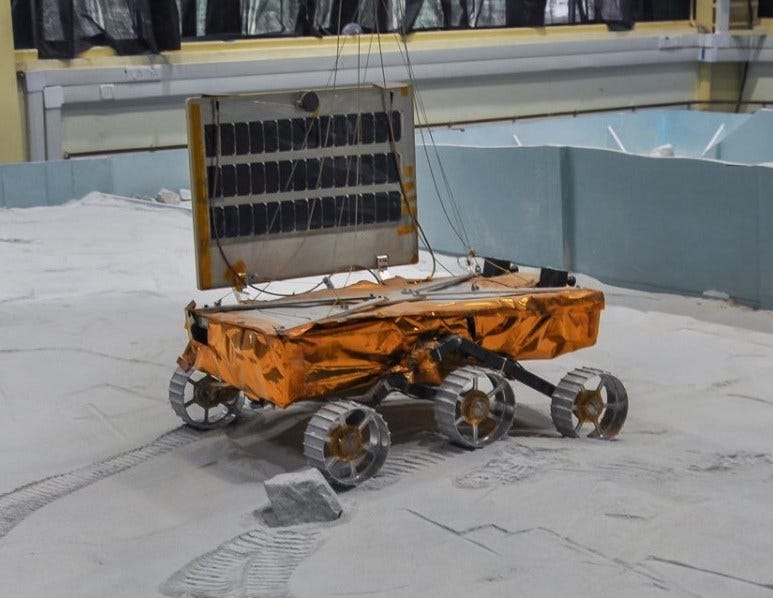What we know about India’s Chandrayaan 3 Moon landing mission
July 20, 2023 update: This post is now old, and kept online for archival purposes. Please read my new and more detailed article on Chandrayaan 3 instead.
After India’s Chandrayaan 2 lander unfortunately failed to land on the Moon in 2019 during its final mission phase, the Indian Space Research Organization (ISRO) undertook building a repeat mission with Chandrayaan 3. It is currently undergoing final tests and is slated for launch in mid 2023. Originally slated for launch in the first half of 2023, Chandrayaan 3 was robbed of its ride to space as ISRO prioritized two GSLV Mk IIIs for commercial OneWeb launches.
To increase the chances of sticking the landing this time around, ISRO has made several upgrades to the Chandrayaan-2-like lander such as software improvements to accommodate failure, strengthened legs, a couple of new sensors for enhanced and redundant navigation-related measurements, and better power and communication systems. The host of sensors on the lander, its engine configuration and the gentle touchdown specifications are listed on ISRO’s official Chandrayaan 3 page.
The mission will also have a 2148-kilogram orbiter that will propel the 1752-kilogram lander to the Moon post-launch and put it into a 100-kilometer circular polar orbit. During and after landing, the orbiter will relay communications between the lander and Earth. It will also host the SHAPE Earth-observing experiment, which is a near-infrared spectro-polarimeter made to observe the full Earth disc from the Moon to get a sense of what signatures of habitable Earth-like exoplanets would look like.
The Chandrayaan 2 orbiter will serve as a backup (and secondary) relay provider. Being a repeat of the Chandrayaan 2 landing attempt, the mission will last a maximum of one lunar day i.e. 14 Earth days.

The landing site
The Chandrayaan 3 lander will attempt a lunar touchdown at the near-polar location of 69.37 S, 32.35 E (click the link to browse on an interactive map). That’s roughly just 100 kilometers east of the Chandrayaan 2 landing site (70.83 S, 22.67 E) lying in the same larger rocky highland region.

Like other lunar highlands, the Chandrayaan 3 landing region is expected to contain material from the ancient lunar crust as well as materials ejected when nearby craters formed during the period of heavy bombardment by asteroids and comets roughly 3.8 to 4.1 billion years ago. Both of these types of materials are great targets for the two spectrometers onboard Chandrayaan 3’s rover.
The lander

The lander will carry payloads similar to Chandrayaan 2. It will insert a thermal probe about 10 centimeters into the lunar soil to measure its thermal properties and learn about the Moon’s interior. A seismometer onboard will detect moonquakes, like NASA’s Apollo missions did. If a strong enough moonquake occurs during the mission, it could provide additional clues about the Moon’s interior, particularly its core.
Vikram will also carry a Langmuir probe to determine the amount, distribution and properties of hot, ionized particles on the lunar surface created by the solar wind, and a radio occultation experiment that will measure electron density in the Moon’s thin but persistent atmosphere. NASA is contributing a retroreflector, an upgraded version of the ones left on the Moon by Apollo missions, which scientists will bounce laser pulses off to better understand the gravitational dynamics of the Earth-Moon system.
The rover

The six-wheeled, 26-kilogram Chandrayaan 3 rover, essentially the same design as the one on Chandrayaan 2 but with enhanced software, will study the geology of the landing region. An X-ray spectrometer will study what the region’s rocks and lunar soil are made of. A high-power laser will shoot and vaporize target material and analyze radiation emitted from it to determine the material’s composition using a (different) spectrometer. Both spectrometers are expected to find pristine materials from the ancient lunar crust.
Aside: Reddit user u/ravi_ram has compiled a nice list of research papers related to the Chandrayaan 2 rover.
ISRO’s lunar soil simulant
For testing the Chandrayaan landers and rovers, ISRO developed a lunar soil simulant called LSS-ISAC-1. To make the simulant, ISRO sourced naturally occurring anorthosite rocks fragments from the Sittampundi Anorthosite Complex in southern India, which aids the simulant’s fidelity. The bulk chemistry, mineralogy and physical & mechanical properties of the final LSS-ISAC-1 simulant are similar to Apollo 16 highland soil samples, in part because Chandrayaan 2’s target landing site was in a lunar highland too.
Communications support
ISRO and NASA signed an agreement in February 2022 to use the latter’s Deep Space Network (DSN) to support communications for Chandrayaan 3. It was shared as but a small note in the February monthly summary of India’s Department of Space. ESA will also provide backup communications via their Estrack network for Chandrayaan 3, as one of the first benefits of a broader technical support agreement signed in July 2021 between ESA and ISRO.
ISRO uses its own Indian Deep Space Network as a primary means for communicating with its planetary spacecraft but partners with other space agencies for backup and secondary options. India’s Chandrayaan 1 orbiter had DSN support too.
ISRO’s lack of mission information
Update: Many of the concerns below, which were written in June 2022, have been addressed by ISRO’s official Chandrayaan 3 webpage as of February 2023. However, I’m keeping this section in tact for now because it was true at the time of publishing and for months after.
All of this information has been put together by following minor developments and tracking multiple sources consistently for over a year. For such a critical mission, it’s frustrating as an Indian to see ISRO not even have a one-pager on their website about Chandrayaan 3, and no official mechanism to provide major updates.
If anything, ISRO has continued to withhold any substantial information on the mission. When Twitter user @frustratedpluto submitted several questions to ISRO under the Indian Right to Information Act in September 2021, nearly all the responses read as follows.
The information sought is exempted from disclosure under Section-8(1)(a) of RTI Act as it would prejudicially affect the scientific, technical and strategic interest of the state/country.
ISRO, a tax-payer-funded civilian space agency, has been outright refusing to provide the public any asked-for substantial information on Chandrayaan 3’s configuration, tests, and more. Even the purely scientific question of “Provide me with the location of the NASA’s LRA payload onboard the Vikram lander on Chandrayaan 2” was given the same response. Indians who have submitted questions to ISRO before are unfortunately familiar with this dreaded statement. It almost makes one think of Chandrayaan 3 as a cold-war-era lunar defense mission rather than a robotic explorer.
For an organization that’s supposed to help inculcate scientific thinking and aspiration in hundreds of millions of Indians, this is a dreadful state of affairs.
→ Browse the Blog | About | Donate ♡
